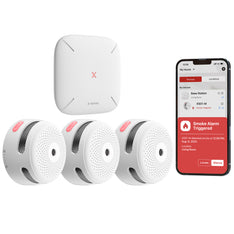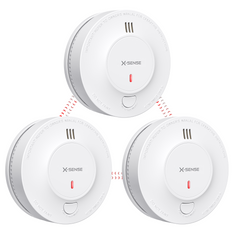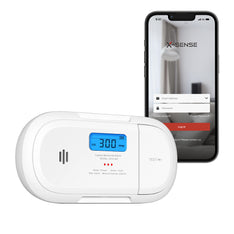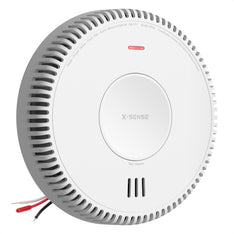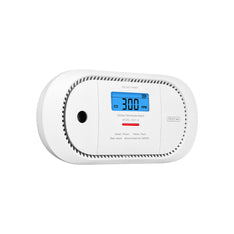The Location to Avoid for Smoke Detectors
Wed, May 26, 2021
Smoke detectors are quite an important tool for the safety purpose of one’s household. Smoke detectors are so important that safety standards of some countries include them as a mandatory tool. Nevertheless, placing smoke detectors here and there won’t make a difference. Hence, you should know the perfect spots to place smoke detectors around your household. At the same time, you should know where should you not put smoke detectors. In the following paragraphs, we will share the locations that you should avoid for placing smoke detectors.
Where Are the Locations to Avoid for Smoke Detectors?
1. Bathrooms
Bathrooms are not an ideal spot for installing a smoke alarm. The steam from the bath or hot shower will frequently trigger the smoke detector, creating a false alarm. Also, the excess moisture in bathrooms can cause damage to the detector over time, leading to the failure of the alarm. Hence, you should not place a smoke detector in or close to bathrooms. And if you somehow place a smoke detector within the range of 20 feet of the bathroom, make sure that the detector is photoelectric type.
2. Near Fans
Fans are also obstructive for smoke alarms. In cases of suspended fans from the ceiling, also known as paddle fans, you should put the smoke detector at least horizontally 3 feet away from the blades’ tips. If the detector is placed too close to the ceiling fan, the fan may blow away the smoke from the sensor of the detector.
3. Near Vents
Just like ceiling fans, smoke alarms should not be placed near furnaces or A/C supplies, any place with turbulent air. That is because the smoke reaching the detector can be blown away by the airflow. Therefore, do not place smoke detectors near vents.
4. Ceiling corners
Ceiling corners should be avoided as well for the placement of smoke detectors. Due to the dead air spaces in these locations, smoke does not usually reach the ceiling corners until it’s too late. Therefore, if you want to get alarmed with adequate time in your hand, you should not put smoke detectors on ceiling corners.
5. Windows and sliding glass doors
Do not locate smoke alarms near sliding glass doors or windows. Drafts from open windows or sliding doors can hamper the flow of smoke to the detector.
6. Near Cooking Appliances
Cooking appliances, including ovens and stoves, emit microwaves, heat, smoke, etc. Placing a smoke detector near these may hence cause false alarms. Therefore, you should install smoke alarms at least ten feet away from such appliances.
7. In Furnace and water heater closets
In cases of water heater closets and furnaces powered by gas, smoke alarms may malfunction due to nuisance tripping. You can use heat detectors instead in such locations.
8. Near laundry washing machines or dishwashers
If you want to install smoke alarms near washing machines and dishwashers, place the unit at least 3 feet away from them.
9. Garages
Experts recommend using heat detectors in garages instead of smoke detectors. At the same time, you should use smoke alarms in rooms with shared doors, floors, or walls with your garage. The car exhaust fumes may cause nuisance tripping if you place smoke detectors in garages. It can also damage the unit’s sensors.
10. Unfinished Attic
Smoke detectors won’t perfectly work at places with extreme cold or heat. Also, places commonly covered with dust or smoke can damage the alarm’s sensors. Hence, you should not use smoke alarms in unfinished attics. Instead, you can use heat detectors in such areas.
11. Near fluorescent lights
Fluorescent lights can cause flickering and electrical noises, causing malfunction of the alarm. Hence, install smoke detectors at least 1 foot away from such lights.
12. Places where the temperature runs below 4-degree Celcius, equivalent to 40-degrees Fahrenheit, or above 38-degrees Celcius, equivalent to 100-degrees Fahrenheit, including outdoor rooms, unheated buildings, basements, porches, unfinished attics, etc.
13. In dusty, greasy, dirty areas. Don’t place the Smoke Alarm near or directly over your stove. For the unit in your laundry room, clean it frequently. This way, it will be free of lint or dust.
14. Close to ceiling fans, drafty areas, air vents, etc. Drafts will blow smoke and keep it away from your smoke detector, preventing the smoke to reach the sensing chamber of the unit.
15. Areas with insect infestation. Insects can block the openings on the alarm’s sensing chamber, resulting in false, unwanted alarms.
16. Electrical radiation or ‘noise’ can cause interference with the activity of the sensor. Hence, smoke detectors should not be placed within 12 inches, equivalent to 305 mm, of fluorescent lights.
17. Smoke detectors are not to place in dead air spaces. These unventilated spaces can prevent smoke from reaching the alarm’s sensors. To avoid such unventilated spaces, you may follow the recommendations regarding installation below.
For mounting on the ceiling, place the smoke alarm as close as possible to the ceiling center. If that is somehow not possible, you can install the alarm no less than 4 inches, which equals 102 mm, away from the corner or wall.
In the case of mounting on the wall (if building codes allow doing so), the upper edge of the smoke alarm should be settled between 12 inches, which equals 305 mm, and 4 inches, which equals 102 mm, away from the ceiling/wall line, which is considered as the common dead air space.
For installing smoke alarms on a gabled, cathedral, or peaked ceiling, place the first alarm within the range of 1 meter (3 feet) of the top of the ceiling when measured horizontally. After that, if additional alarms are required, they should be placed based on the ceiling slope’s angle, length, etc. You can check NFPA 72, A.11.8.3 for detailed requirements for such peaked or sloped ceilings.
FAQs
1. How should be the smoke detector placement?
Make sure to check the detector before installation for whether it has been approved by UL (Underwriters Laboratories) to fulfill the safety criteria.
Before installing a smoke detector, read the manual to have an appropriate set-up.
Ensure that the photoelectric fires and the ionization or both can be detected precisely by your smoke detector.
Smoke detectors need to be installed on the ceiling. In the case of a wall-mounted smoke detector, it must not be settled within 12 inches of the ceiling.
If possible, connect numerous detectors. This way, all alarms can sound when there is smoke detected.
2. What is the range of the area that a smoke alarm can cover?
An estimate of 900 square feet is the utmost amount smoke alarm can shroud. The area that will be covered by the smoke alarm depends on a few factors, including architectural design, beams, and ceiling pockets.
3. What are heat alarms and where are they placed?
Generally, a heat alarm is used in places where the smoke alarms might trip incorrectly or unnecessarily. Detection of fires from high heat is the prime objective. As heat alarms are not affected by smoke and are not susceptible to false alerts caused by either cooking or exhaust fumes. Consequently, they can be easily placed in the kitchens, garages, gas furnaces, and gas water heater closets. Usually, these are cheap and carried by Lowe’s, and Home Depot, and other stores for home improvement.
Smoke detectors are a must-to-have in your house. Hence, with proper knowledge of where to place it and where to not, you can establish impeccable safety for your home.
You may also like:
- Smoke Detector Placement in Bedroom
- Will Smoke Detectors Cause Radiation Poisoning?
- All about Smoke Detector Code
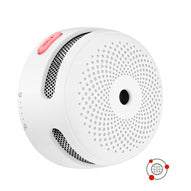
X-Sense XS01-WR Wireless Smoke Detector
- Wireless technology uses radio frequency to transmit and receive messages.
- If one alarm goes off, the rest of the interconnected alarms will alert as well.
- 5-year replaceable battery and 10-year sensor life.
- Advanced photoelectric sensor is more sensitive and reduces false alarms.
$35.99
